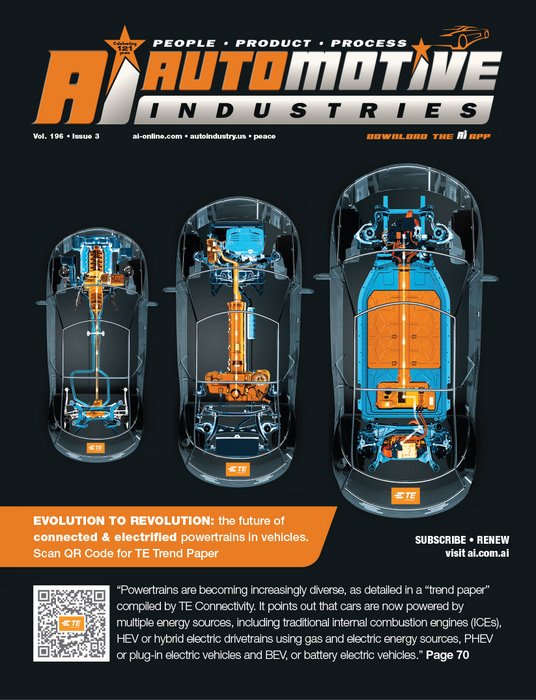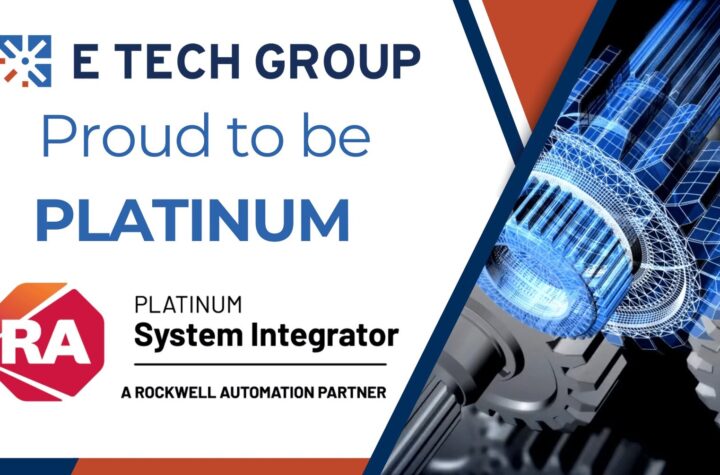
EARNPowertrains are becoming increasingly diverse, as detailed in a “trend paper” compiled by TE Connectivity. It points out that cars are now powered by multiple energy sources, including traditional internal combustion engines (ICEs), HEV or hybrid electric drivetrains using gas and electric energy sources, PHEV or plug-in electric vehicles and BEV, or battery electric vehicles.
Add to this diversity are tightening governmental regulation, global competition, ever-increasing demands for safer vehicles regardless of power plant, and shifting consumer demand. All these challenges can only be met if there is accurate measurement and control of the processes at every point of contact or transition. Research undertaken by London-based Technavio found the market for powertrain sensors will grow by 6% per year between 2017 and 2021 due to a rising demand for fuel-efficient, safe and low emission vehicles.
TE Connectivity is a global leader in connecting data and power networks: “From the Mars Rover to subsea communications networks, electric cars to wearable fitness trackers, smarter appliances to smarter buildings, our connectors, sensors, antennas and other products are helping to make the future,” says the company. Information contained in this article is drawn from the TE Connectivity trend paper “Evolution to Revolution: The Future of Connected & Electrified Powertrains in Vehicles”.
There are both technological and marketing challenges. A January 2017 report from McKinsey & Co. found that some sizeable barriers exist in consumer understanding of power plants. While virtually 100% of consumers in the U.S. and Germany understand how an ICE vehicle works, only about half would say the same for electric or related vehicles. Moreover, while 30 to 45% of consumers consider an EV or HEV purchase, less than 5% in either country actually purchase an EV.
McKinsey’s survey of Chinese consumers shows that interest in ‘new energy vehicles’ or NEVs (covering both BEVs and PHEVs) has tripled over the last five years. This increase is due, in part, to significant government support for NEVs, which includes substantial investments in an improved EV-charging infrastructure, increased purchase subsidies, tax exemptions, and fewer restrictions for EVs regarding license plate access and restricted driving days in Tier-1 cities, the report says. McKinsey predicts that this trend will see electric vehicles make up 50% of new car sales by 2030.
Data in the powertrain
Sensors provide the data for control, adaptation and response of vehicle functions that increase safety, comfort and efficiency. The diversity of the range is reflected by TE’s portfolio of powertrain products, which includes transmission sensors for detecting drive mode and shift drum position in transmission applications; speed sensors for measuring gear speed, travel and angle position; and an all-gear detection sensor for measuring gear and shift position in manual transmissions. 48V systems
The auto industry’s ability to support power demands with a traditional belt-driven 12V generator and point-to-point wiring is becoming more difficult with every model year. To solve these problems automakers will soon introduce 48V systems. Handling the high voltages that come along with the introduction of electric drivetrains in road vehicles demands entirely different requirements for electric switching devices.
When currents of that magnitude pass a pair of closed switching contacts, the associated Lorentz force generates a levitation force that pushes the contacts open. This force increases with the square of the current. At 1kA, the force reaches already about 1N. If the current is high enough, the contacts will separate and create a potentially dangerous arc.
In response TE has launched a new generation of high voltage automotive contactors that work without a sealed contact chamber and without pressurized inert gas. This not only eliminates a complex and expensive manufacturing process, but also improves the functional reliability of the device. A potential gas loss is not an issue anymore, and the contact does not need regular replacement during vehicle maintenance. Recently TE launched the EVC 175 contactor, which is the latest product in the growing contactor portfolio.
The EVC 250-800 contactor provides a solution for hybrid and electric vehicles with higher system voltages up to 900V. The latter is based on the well-known EVC 250 contactor, but features increased creepage and clearance distances that fulfill the isolation requirements of IEC 60664 for up to 1,000VDC.
Safe charging
Consumer choices are not always motivated by logic and technology. In the case of the electric car, the charging connector often makes or breaks sales. TE has developed a range of chargers which not only look good, but are safe and extremely robust.
Connecting batteries
One of the connectivity issues in lithium-ion batteries is to safely connect a number of cells together in a very harsh automotive environment. TE is actively working on solving these critical challenges in teaming with industry leaders to develop integrated solutions that enable new technologies and bring new levels of efficiency and performance to existing technologies, says the company.
Smart connector systems
TE’s broad connector portfolio of smart connector systems is designed to perform in high voltage environments where safety is a top concern. Some key areas of focus for the smart connector systems include:
- SHIELDING: To avoid interference on the data and power connection system in the car.
- SAFETY: TE’s touch-safe technology helps protect the user handling high voltage connectors. TE connectors are designed so users cannot touch current-carrying elements with their fingers.
- CREEPAGE AND CLEARANCE DISTANCES: Increased distances between conductive materials leads to higher possible voltage levels. TE engineers have designed systems that help enable the highest possible voltage levels while allowing for minimum packaging.
An example of a product with the features mentioned above is TE’s current line of HV AMP+ terminal and connector systems. This line includes the AMP+ HVA 280 family, designed for auxiliary applications, and the AMP+ HVP 1100, designed for new generation batteries made for fast charging applications.














More Stories
Celanese Materials Shine in Multiple Category Winners at 2024 SPE Automotive Innovation Awards
New future-ready single-slot PXIe controller for high-performance T&M applications from Pickering Interfaces
US Army Awards ANELLO Photonics Contract Phase II SBIR Topic “xTech Search 7 SBIR Finalist Open Topic Competition”